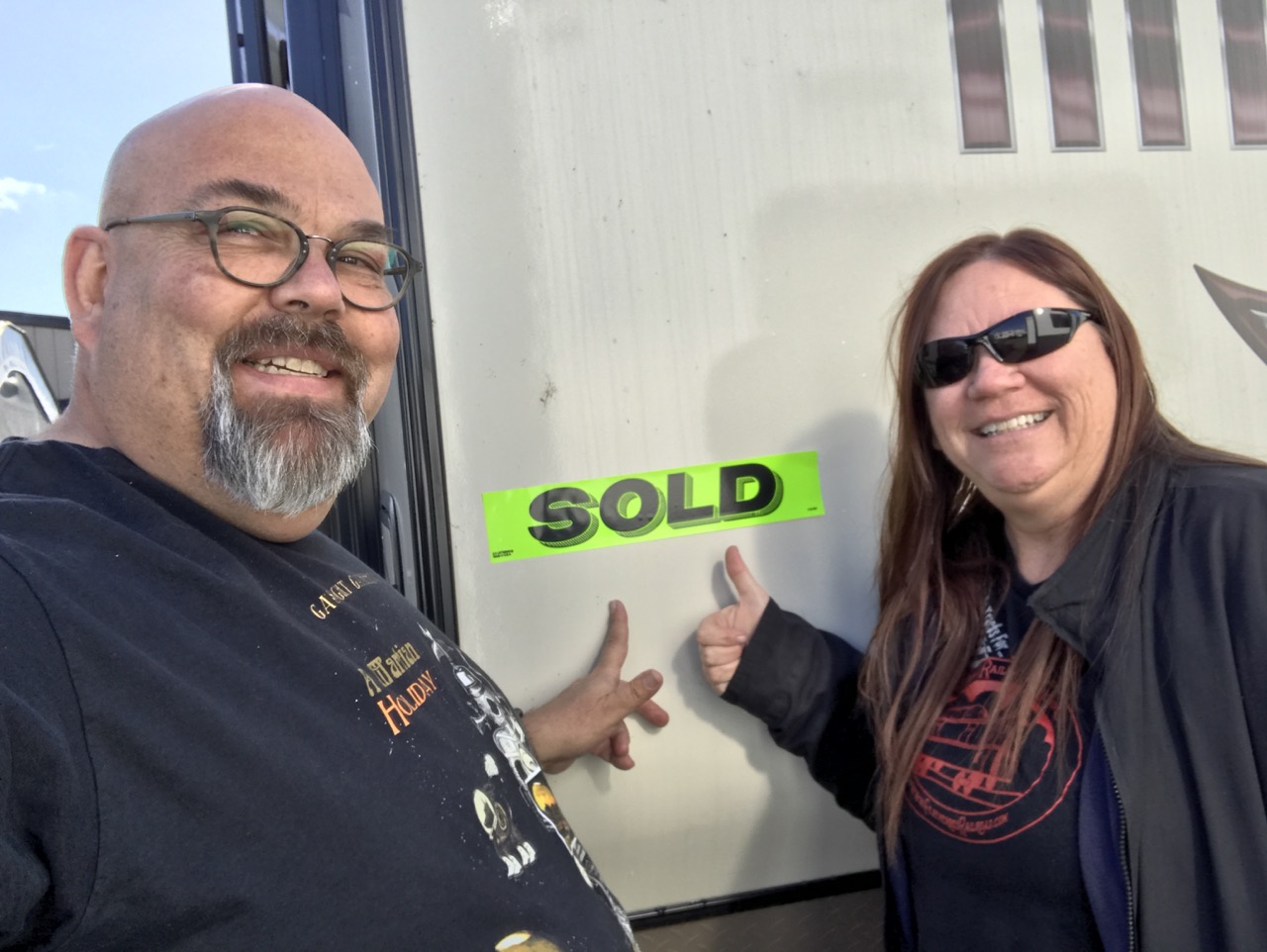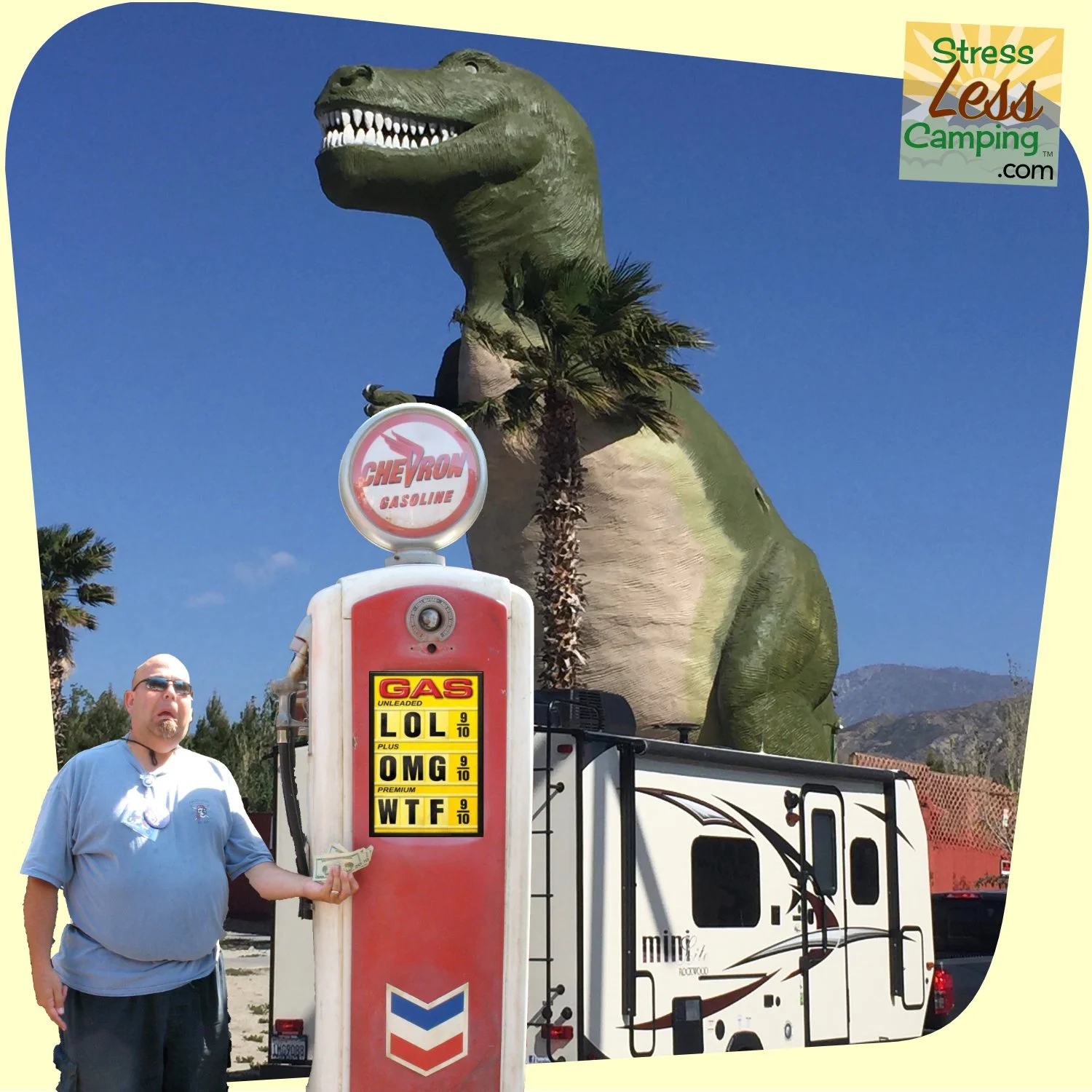Improve your gas mileage while towing your RV
Improve your RV fuel mileage while towing
Many RVers ask how to improve their fuel economy while towing. We have some answers that can help you get better milage while towing.
It’s pretty common knowledge that whatever fuel economy you get with a vehicle, it’ll drop significantly when you attach a trailer. RVs are not known for their fuel economy and, as fuel prices soar, this means some folks are canceling their plans to enjoy their RVs. You don’t have to do this
What is fuel economy
Simply put, fuel economy is how much fuel it takes to move your vehicle down the highway. No kidding, right?
But a lot of things affect this. At slower speeds weight is a big factor in fuel economy as your engine is overcoming the mass of your vehicle. It wants to sit still, the engine has a different idea.
Once you’re up past around 35 miles per hour or so, more fuel is consumed overcoming wind resistance than anything else. The faster you drive, the more fuel it takes to push your vehicle through the air.
But other factors affect how much fuel it takes to move a mile. Weight, speed, internal friction, how you drive and more are all contributing factors.
An illustration from Airstream that shows how wind affects their trailers.
Aerodynamics
RVs are almost always going to get terrible fuel economy. The reason for this is that it simply takes a tremendous amount of fuel to push a big box through the air. Auto makers figured this out decades ago and that’s why cars all look the same today. It just takes a certain shape to cut through the wind. The less wind resistance there is the more efficient a vehicle can be.
In fact two companies have locked into this - Snoozy and Airstream. In a column I write for RVTravel I’ve looked at both of these units and how their aerodynamics have helped owners get better fuel economy. You can read the article on the Snoozy II here and get the story on Airstream aerodynamics here.
In fact part of the engineering for Airstream’s new electric trailer, the eStream, was to improve the company’s aerodynamics further by eliminating all the things that stick out of the roof. Here’s the story on the Airstream eStream.
Boulder aerodynamics shows how wind passes over a trailer and tow vehicle.
What can you do about aerodynamics
While the eStream isn’t currently available there are a few things you can do to improve the aerodynamics of your vehicle. Look at the shape of what you’re driving. If there are racks on the roof or bicycles on racks, that will cost you fuel-wise.
Bumper guards and other things that affect the aerodynamics of your tow vehicle, too, can make a difference.
Unfortunately RV companies haven’t cared about aerodynamics at all so if you look at the roof of a typical travel trailer there are all sorts of things sticking up that cost you fuel. Air conditioners, in particular, are a huge drag but so are antennae, vents, hoods and all of that.
Our own bicycle rack on the front of our travel trailer, when loaded with bikes, makes a noticeable difference in fuel economy. We’ve solved this by eliminating stuff we bring and putting our bikes in a camper shell.
Oh, and a camper shell might also help a bit with fuel economy. Even though it adds weight it changes the profile of the tow vehicle and can make a small difference in your mileage when towing.
Frankly the best trailers for towing are the pop-ups such as the TrailManor, the Opus OP2 or the Rockwood or Flagstaff pop-ups. These sit below the roofline of your tow vehicle and have a minimal impact on aerodynamics.
How to improve fuel economy
Simply put, the less work you put on your engine, the less fuel it consumes. Here are some factors that you can do that can improve your fuel economy.
RV tires
Underinflated or improperly inflated tires not only cause the vehicle to consume more fuel, but also shorten the life of the tire. They can also put your journey and your family in peril. Here are eight safety tips for RV tires.
The US Department of Energy said that maintaining optimal tire pressure levels can improve fuel economy by about three percent.
Speed
If you do jackrabbit starts like a drag racer you will stress your vehicle more and use more fuel. If you drive like a railroad locomotive engineer you will improve your fuel economy but also reduce wear on your vehicle. I was told by winning car racer Jackie Stewart that he pretends there’s an egg between his foot and the accelerator pedal. He has won a lot of races with this philosophy and you can win by using less fuel.
The faster you go, the more fuel it takes to overcome wind resistance. Keeping highway speeds consistent and slower will make a big difference in your fuel economy.
Vehicle maintenance
Have your mechanic make sure all the vehicle systems are in proper working order. Things like the Mass Air Flow Sensor, spark plugs (if it’s a gasoline-powered vehicle), fuel injectors and the transmission are all components that can work together to maximize fuel efficiency - or reduce it.
Using the engine oil specified by the manufacturer can make a positive difference.
The positive difference of a clean air filter can also not be understated. This simple maintenance item can make quite a difference. Also, use the air filter recommended by your vehicle manufacturer.
Idling your engine is mostly a waste of money. Many newer vehicles even come with a system that shuts off the engine at a traffic signal. While this is extreme, avoid idling your engine when setting up or breaking camp.
Part of maintenance means making sure that your tow vehicle and trailer are properly set for one another. Making sure your hitch and suspension are all in proper adjustment can make a big difference in both safety and fuel economy.
The fuel you buy
There is a common fallacy that premium fuel is better for your car. This is not really true. In fact, in some vehicles, you might actually be doing yourself a disservice by using premium fuels.
The first place to check is the owners manual of your vehicle. It will specifically tell you what fuel the vehicle is designed to operate best on. There are thousands of engineers who perfect the vehicles we drive - it’s not a bad idea to listen to their advice.
Fuel octane number is, simply, how it resists ignition. The higher the octane, the more it resists exploding. Yes, this is a great oversimplification.
If your vehicle is designed to run on regular gasoline, putting in premium will do nothing for it. Literally nothing.
But if it is designed to run on premium, then regular will likely reduce the performance and could shorten engine life. This is typically in engines with turbochargers where the internal pressures (compression) are high and you need a fuel (premium) that is resistant to igniting before it’s supposed to (predetonation).
However the cheapest fuel isn’t always a good choice either. The fuel industry has come up with a label called “Top Tier” which are the fuels that meet specific standards for additives including detergents to help keep the engine clean.
Surprisingly even some discount sellers like Costco and Arco offer Top Tier gasoline. This is what I look for.
How much will it cost you
Even though the numbers at the pump continue to rise there’s a simple calculation you can do to figure out how much more it actually costs you to operate your RV based on fuel prices.
If you average 10 miles per gallon on a 500 mile trip that’s 50 gallons of fuel that you’re using. If the price of fuel goes up by $2 per gallon that’s an increase in the cost of your journey by $100.
Sure, $100 is $100 but, compared to the fact that you’ve got an expensive RV being towed by an expensive truck, $100 in the whole scheme of things shouldn’t mean staying home.
Think about how much more it would cost you to go stay at a hotel. We just did and, in a fairly mediocre place, it was $175 per night. Yikes. Then we had to buy food in restaurants, pay for parking and more. It would have actually been less expensive and better to have brought our trailer and stayed at a local campground.
Make changes in trips
Another option is to change the trips you take. You could consider going to a place that’s central to activities you enjoy, and then riding your bicycles or eBikes to those activities. Lakeside campgrounds mean you can dip your boat, kayak or canoe in the water or simply rent one. Lots of places that allow camping are right in locations that have outstanding hiking trails.
If you enjoy golf, consider a Harvest Hosts membership that lets you camp right at many golf courses.
Choosing to get away when there are festivals and events can also mean you simply park your RV and catch a ride to those. In fact, many campgrounds offer some sort of shuttle or transport service to local activities.
And don’t forget that services like Uber and Lyft might be a good value since the vehicle you tow your RV with is probably not very fuel efficient. It may also be difficult to find parking in some areas and expensive so hitching a ride with these ride sharing services can actually make financial sense in some cases. Plus, riding with them is StressLess.
Don’t stop RVing
There’s a song by Journey called Don’t Stop Believing and I want to repurpose that into Don’t Stop RVing. Who knows - I may work this out and post it on our StressLess Camping Facebook Group, which is also a great place to weigh-in on this information and offer your own tips.
One last thing, we have a list of apps and tools to help with your trip planning including apps that will help you save money on fuel.










